Lycée Jeil (전주 제일고등학교)
4.9Km 2024-10-25
180-1 Namnosong-dong, Wansan-gu, Jeonju-si, Jeju
La scène de Na Heedo (Kim Taeri) et de Baek Iijin (Nam Joohyuk) a été tournée dans ce lycée à Jeonju.
Petit supermarché Ahyeon (아현슈퍼)
5.0Km 2025-03-15
854-7, Dongseohak-dong, Wansan-gu, Jeonju-si, Jeonbuk
Le lieu est réputé comme set de tournage notamment pour son ambiance type année 1990.
Palbok Art Factory (팔복예술공장)
5.1Km 2024-07-09
46, Guretdeul 1gil, Deokjin-gu, Jeonju-si, Jeonbuk
Palbok Art Factory a été fondée sur la base d'une ancienne usine de casettes audio qui a fermé ses portes après l'avénement des CD il y a plus de 25 ans. L'usine a pour objectif de diffuser l'art et la création à travers le monde, à l'image de l'ancienne activité des lieux qui a connu son pic au milieu des années 1980.
Tunnel Hanbyeok (한벽터널)
5.1Km 2024-04-08
Hanbyeok-dang, 7-3 San, Gyodong, Wansan-gu, Jeonju-si, Région Jeonbuk
Le tunnel Hanbeok est réputé pour ses vues romantiques apparues dans divers dramas en Corée, notamment "Twenty-Five Twenty-one".
Pavillon de Hanbyeokdang (한벽당)
5.1Km 2024-04-07
2, Girin-daero, Wansan-gu, Jeonju-si, Région Jeonbuk
+82-63-281-2166
Le Pavillon de Hanbyeokdang, situé dans la province du Jeollabuk-do, a été désigné propriété culturelle réelle No. 15. En 1404 lors du royaume de Joseon, un haut-fonctionnaire avait construit cette demeure comme résidence secondaire. Elle se trouve au pied du Mont Seungamsan donnant sur le splendide panorama du fleuve Jeonjucheon. Malheureusement, une autoroute a été créée dans les environs depuis, et la beauté du paysage en a souffert. Dans le passé, nombre d’écrivains étaient à la recherche du Pavillon de Hanbyeokdang afin de donner substance à leur inspiration. Ce dernier est aussi connu pour la beauté de la montagne qui l’entoure, ses brumes flottant au loin. C’est ainsi un des 8 lieux à voir absolument à Jeonju.
Route Baramsseoneun-gil (바람쐬는길)
5.3Km 2024-04-08
21, Baramsseoneun-gil, Wansan-gu, Jeonju-si, Région Jeonbuk
La route Baramsseoneun-gil désigne la route entre Jeonju Eco Museum et le tunnel Hanbyeok. Le nom de la route provient du ventqui souffle le long de la route, faisant de l'endroit un endroit conseillé pour les promenades.
La route a également été choisie par le KTO comme l'un des meilleurs chemins à parcourir avec son animal de compagnie. On trouve aussi une station de prêt de vélo situé le long du chemin. Le tunnel Hanbyeok est connu en tant que lieu de tournage du drama "Twenty-five Twenty-one (2022)".
Festival International du Sori à Jeonju (전주세계소리축제)
5.4Km 2025-08-12
31, Sori-ro, Deokjin-gu, Jeonju-si, Région Jeonbuk
• Ligne Info Tourisme : +82-63-1330 (coréen, anglais, japonais, chinois) • Pour obtenir plus d'info : +82-63-232-8398
Le Festival International du Sori de Jeonju est un festival de musiques du monde centré sur le chant et la musique coréenne. Il s’agit d’un festival d’arts du spectacle de premier plan où d’exquises musiques coréennes et du monde sont réunies ensemble. Le festival couvre une large gamme de spectacles, de la musique marginale à des performances magistrales par quelques unes des voix les plus reconnaissables au monde. C’est un festival excitant et divertissant où la musique, la nature et les gens s’animent ensemble.
Centre artistique du Sori du Jeollabuk-do (한국소리문화의전당)
5.5Km 2024-12-18
31, Sori-ro, Deokjin-gu, Jeonju-si, Région Jeonbuk
La ville de Jeonju est fière d’avoir une richesse locale au niveau culturel, traditionnel et historique. Les résidents sont passionnés par leur héritage spécialement lorsque l’on en vient aux arts. Le Centre d’Arts Sori de Jeollabuk-do est l’exemple même de ces croyances. Le complexe propose une série de performances d’arts scéniques et visuels remarquables à pleinement apprécier. C’est aussi un excellent endroit pour les activités de loisirs, les évènements et les réunions. Le style architectural sensationnel du bâtiment reflète le désire du centre de diffuser l’admiration des arts à travers le monde.
Montagne des Martyrs (Chimyeongjasan) (천주교성지 치명자산)
5.8Km 2024-04-07
103-88, Naksujeong2(i)-gil, Wansan-gu, Jeonju-si, Région Jeonbuk
+82-63-285-5755
La montagne des martyrs est l’oeuvre des catholiques persecutés de Jeonju au 18ème siècle. De nombreux martyrs y sont enterrés y compris un couple marié qui fit le voeu de rester vierge pour l’éternité. Le mari de ce fameux couple est Lee Jong-cheol, son père, un autre martyr décida qu’il devait se marier mais rester pieux et pure.
Ce sont sept personnes de sa famille qui reposent dans ce cimetière. Il existe aussi un chemin de croix et une cathédrale.
Temple Donggosa (동고사)
5.8Km 2024-04-07
San 10, Gyo-dong, Wansan-gu, Jeonju-si, Région Jeonbuk
+82-63-288-1626
Le temple Donggosa est un temple bouddhiste de l’ordre Taego, situé sur le mont Seungamsan à Gyo-dong, dans la ville de Jeonju, au sein de la région du Jeollabuk-do. La randonnée jusqu’au temple est une expérience rafraîchissante, de par l’air frais environnant et de la vue panoramique sur le centre de Jeonju depuis le temple. Les bâtisses furent construites les unes après les autres le long de la crête et sont alignées avec Daeungjeon, le bâtiment principal situé au milieu.
Le temple Donggosa est de petite taille mais fut merveilleusement décoré avec des portraits de grands moines bouddhistes défunts et des peintures bouddhistes murales réalisées sur du bois. Le chemin de randonnée à la droite du temple Donggosa mène au domaine des martyrs de Chimyeongjasan, qui accueille les tombes de nombreux catholiques, persécutés pendant la période tardive de la dynastie Joseon.

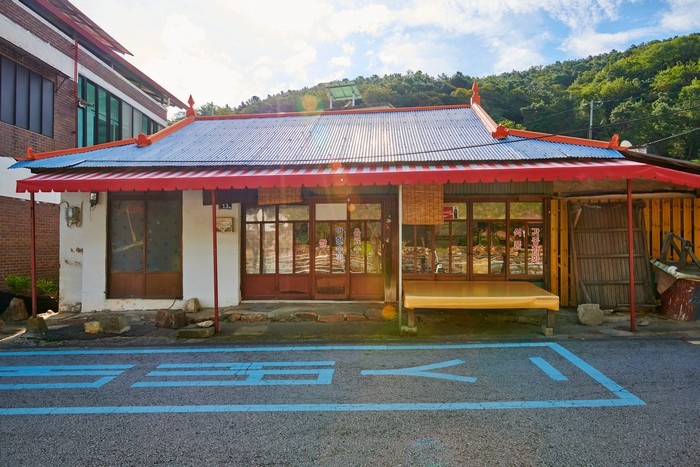
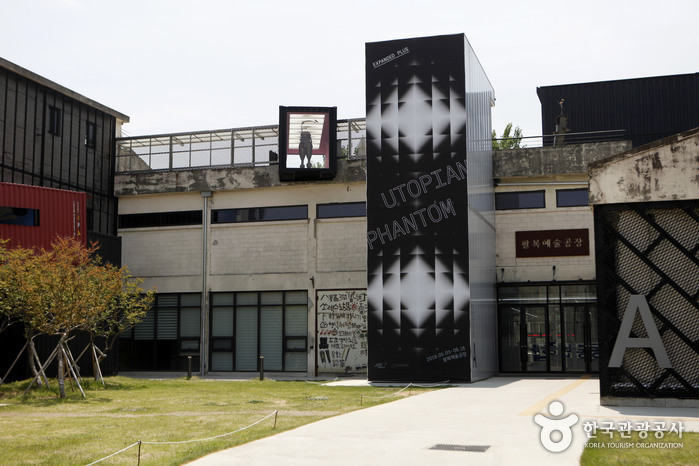

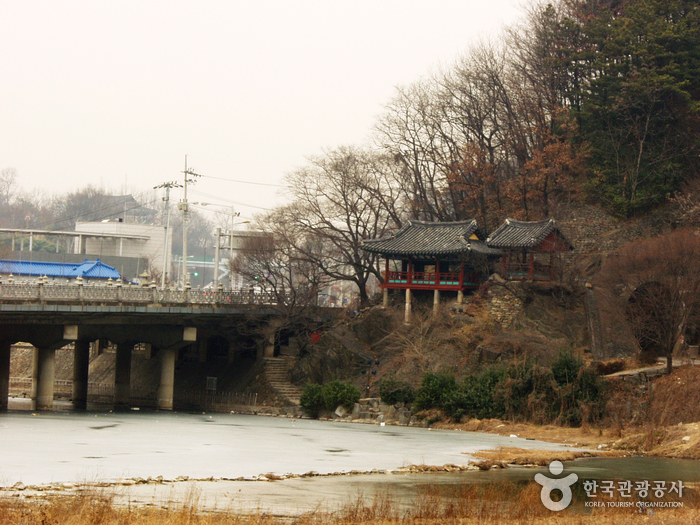
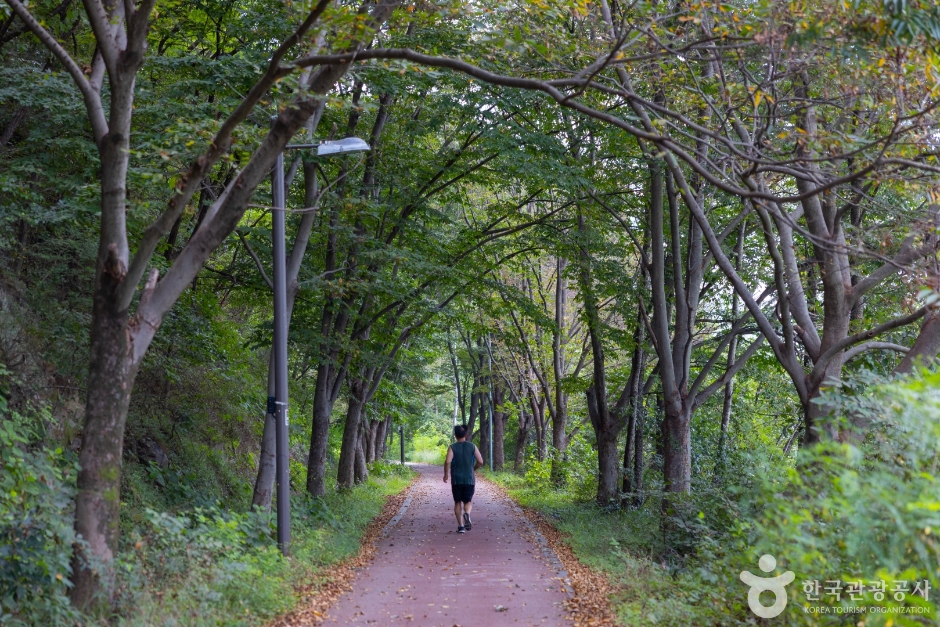

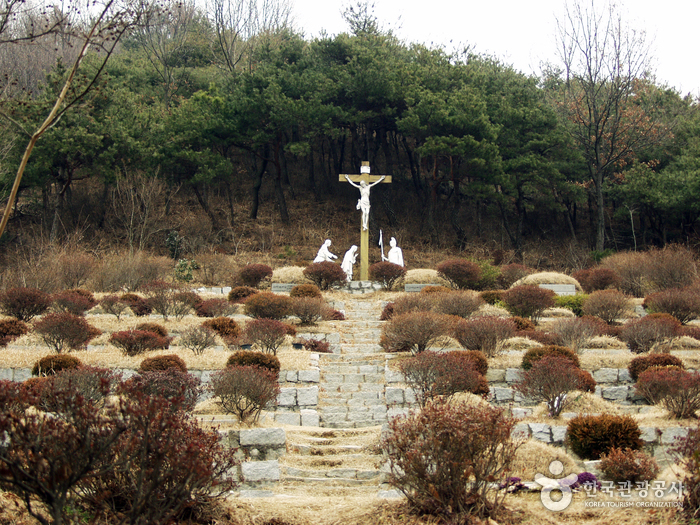
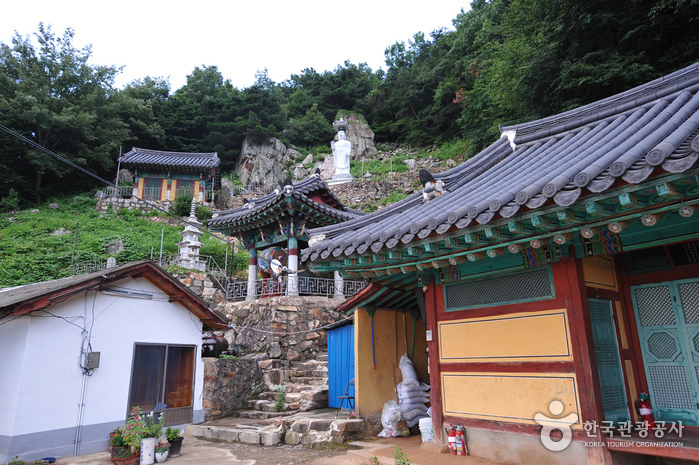
 Français
Français
 한국어
한국어 English
English 日本語
日本語 中文(简体)
中文(简体) Deutsch
Deutsch Español
Español Русский
Русский